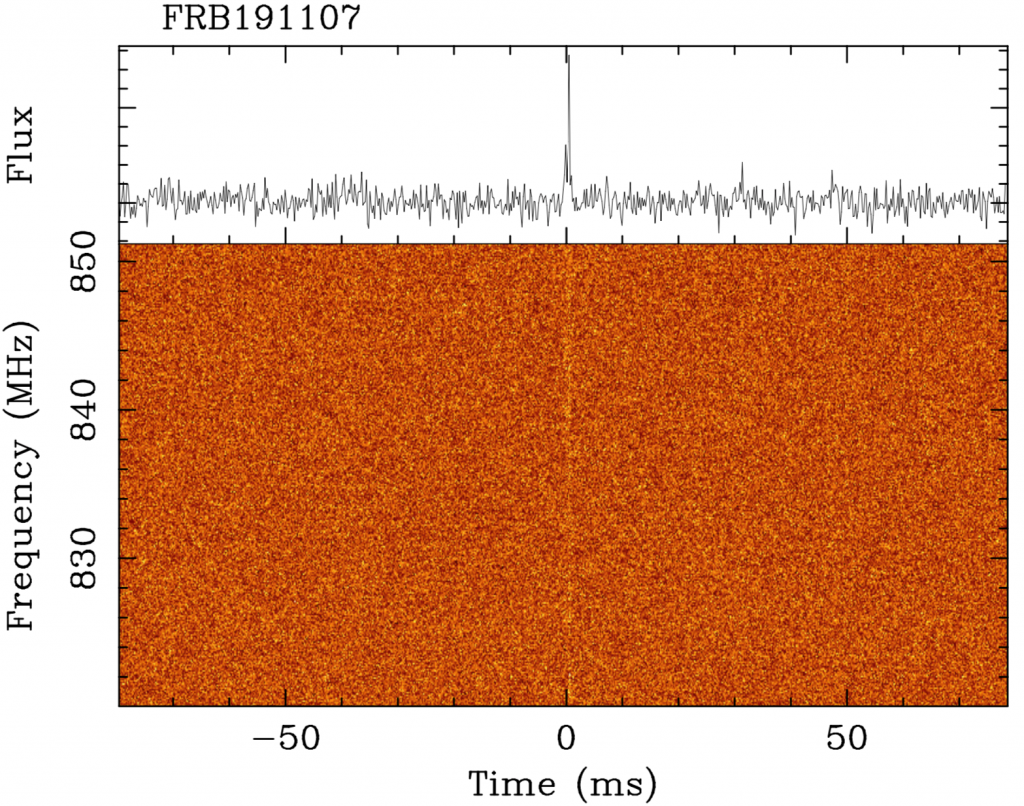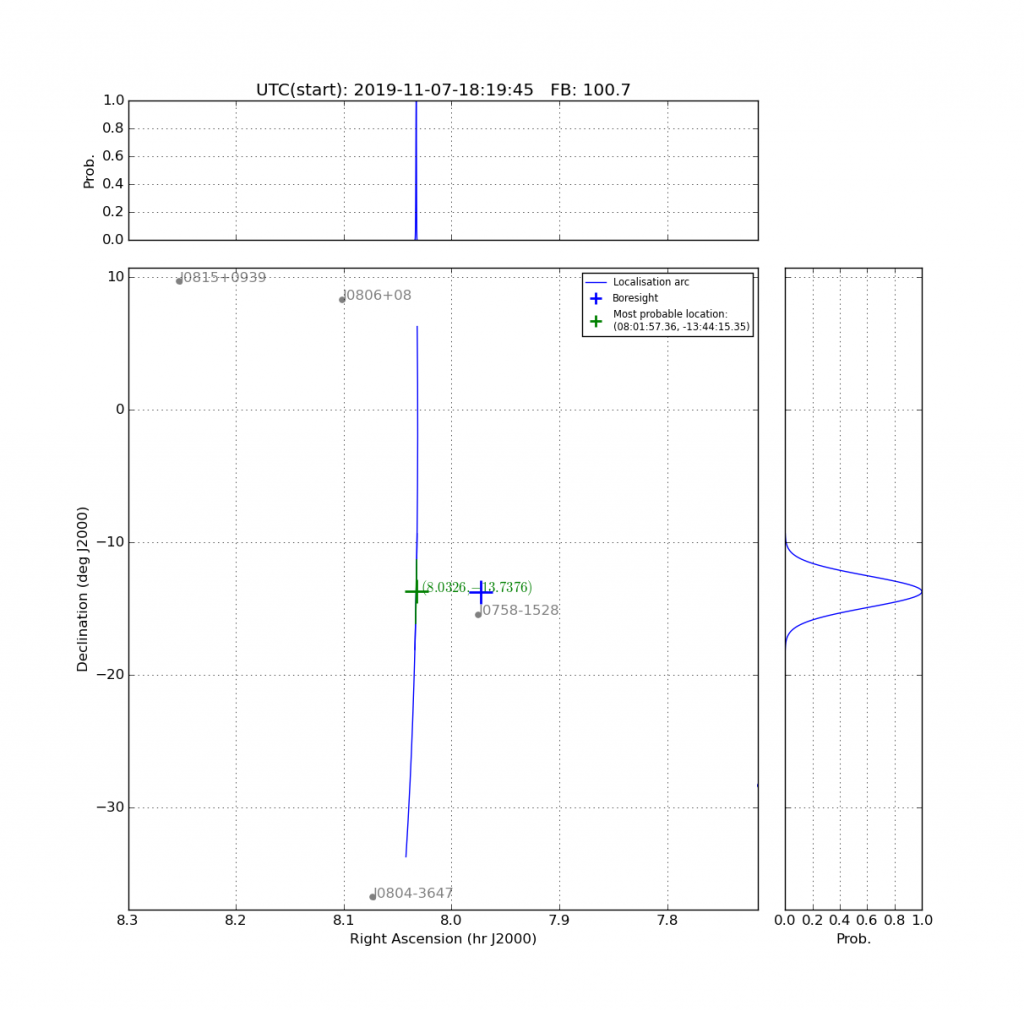At UTC 2019-11-07-18:55:36.7 (2019-11-07.788619213), we found a fast radio burst as part of the ongoing search program (UTMOST), at the Molonglo telescope.
Molonglo is a 1.6 km long East-West array (Bailes et al 2017, PASA, 34, 45) and was operating in drift-scan mode with pointing centred on the meridian at the time of detection. Source localisation is excellent in Right Ascension (5 arcsec at 1-sigma) but poor in Declination (~1.2 deg at 1-sigma) (see Caleb et al 2017 MNRAS 468, 3746).
FRB191107 was found during a blind FRB search programme in real-time using an automated GPU-accelerated/machine learning-based pipeline and the raw voltages were recorded for offline processing.
The optimal dispersion measure (DM) that maximizes the signal-to-noise ratio is: 714.25 pc cm^-3. The DM estimate of NE2001 model is ~127.2 pc cm^-3, and YMW16 model is ~145.9 pc cm^-3 at this position, resulting in an intergalactic excess of ~587 pc cm^-3. The upper limit on the DM-inferred redshift is thus z ~ 0.53.
An early estimate (lower limit) of the event’s apparent fluence is ~6.7 Jy ms (corrected for attenuation of the primary beam in the RA direction, but not in the Dec direction), with a detection signal-to-noise ratio = 23.3.
The most likely position is RA = 08:01:57.077, DEC = -13:44:15.52, J2000, Galactic: Gl = 233.396 deg, Gb = 8.829 deg. The 95% confidence localisation arc is as follows: (RA, DEC) in (hours, deg)
8.032725 -16.092056
8.032589 -15.591111
8.032458 -15.090167
8.032333 -14.589250
8.032211 -14.088306
8.032094 -13.587361
8.031986 -13.086417
8.031881 -12.585472
8.031778 -12.084528
8.031683 -11.583583
8.031592 -11.082639
A formula describing the localisation arc is:
RA = 8.032153 – 2.313314e-4*(DEC + 13.837823) + 1.009132e-05*(DEC + 13.837823)**2
where RA is in hours, Dec is in deg, and is valid in the range Dec = [-17.1, -10.6].

